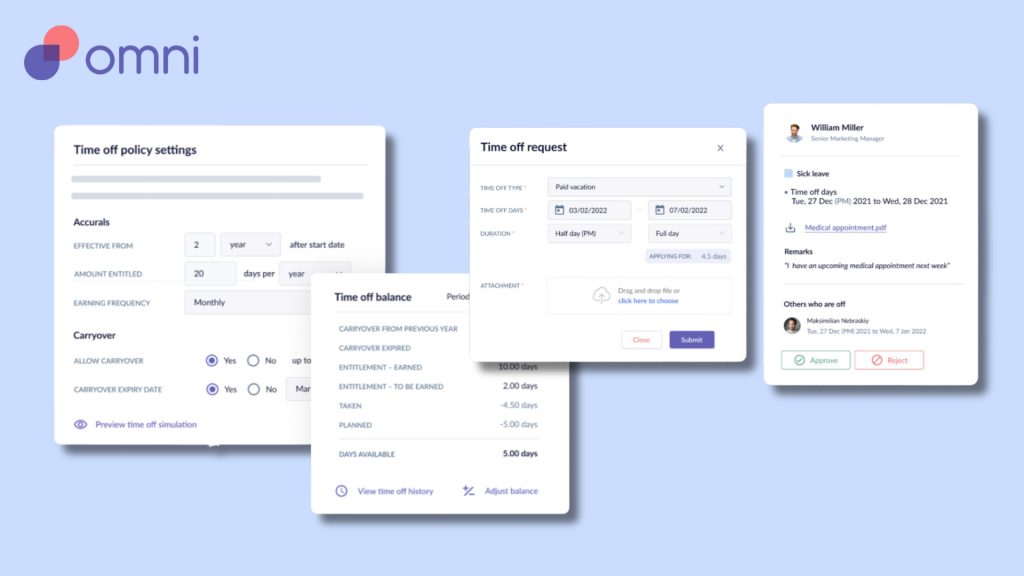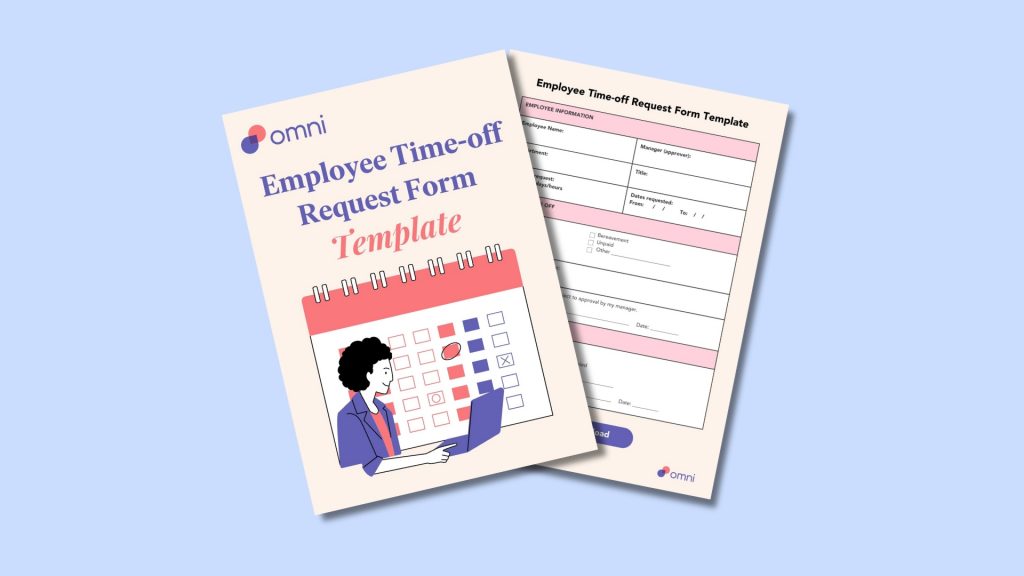Receiving an employee time off request is a routine occurrence for HR professionals and managers. As company culture remains top of mind for many as a tool for employee retention and engagement, HR leaders are encouraging their employees to utilize their benefits and maintain a healthy work-life balance.
But with the various tasks that HR leaders juggle, an employee time off request can quickly become a headache that causes bottlenecks in your employee management practices. Having an employee leave management system to effectively direct leave requests can help alleviate errors, frustrations, and delays in your time and attendance practices.
Employee Time Off Request Challenges
While an employee time off request may seem fairly straightforward, it’s the management and influx of information that can often pose a challenge for HR and management. There are several pain points you may have encountered (and some you may be unaware of) when managing leave requests for your employees.
Lack of visibility
The one-off employee time off request is no sweat, but what about when multiple employees request time-off for the same dates? This is not only a challenge in logistics, but can become a nightmare if you don’t have a clear view of exactly who is requesting time off at what time. A lack of visibility can cause managers to approve requests without the full picture, or come up short on staff due to over-promising time off because they were unable to view the rest of the team’s availability. This can be particularly frequent around peak-leave seasons such as holidays.
Inaccurate leave calculations
Unless your organization offers unlimited vacation, you most likely need to track and manage employee leave balances to know how many days have been used, and how many remain for your employees. When your time management system relies on manual entry and spreadsheets to track each employee time off request, the likelihood of data entry errors or miscalculations is high. It can cause issues such as inaccurate administration of benefits, an over reliance on managers to inform employees of their leave balances, and the loss of valuable time that could be focused on strategic efforts to drive your business.
Accounting errors
As mentioned before, inaccurate leave calculations can lead to major accounting errors. Whether you pay out employees for unused vacation at the end of the year, or approve too much PTO due to inaccurate leave balances, mismanaging an employee time off request can lead to monetary losses for your business and disgruntled employees.
Manager bottleneck
Being inundated with requests to review and approve without a comprehensive system that allows you to clearly see employee’s schedules takes up an unreasonable amount of time for managers. Whatsmore, when employees are reliant on their managers to calculate and convey their leave balances, it places an undue burden on management and HR teams, which not only gets in the way of their busy to-do lists, but slows down the process for employees to access their benefits.
3 Steps to Effective Employee Time Off Request Management
Step 1: Establish a clear leave policy
Develop a comprehensive time off policy that clearly outlines the procedures and guidelines for requesting and approving time off. Details such as the types of leave available and the time allotted should be included in your employee handbook that is presented during onboarding.
To clearly communicate the procedures for submitting an employee time off request to help streamline your process, consider the following:
Establish a timeframe for time off requests
To avoid last minute requests that can cause scheduling issues and disrupt workflows, establish a timeframe in which folks are eligible to submit their employee time off request. This allows managers a buffer to ensure all leave requests are honored while maintaining productivity and meeting deadlines.
Standardize how to submit an employee time off request
Communicate with your teams what information they need to include in their leave requests. This may include their title, manager’s name, and reasons for requesting. You’ll also want to develop a system for submission, which could include email, paper form, or sent through your Human Resources Information System (HRIS).
Download our free Employee Time Off Request Form template
Determine blackout periods
There may be a large project or busy season in which your company needs all hands on deck. Establish blackout periods at the beginning of each calendar year to clearly inform employees of when they are unable to take time off (with the exception of unplanned emergencies). This allows employees adequate notice to plan their leave and helps maintain healthy workflows.
Be transparent in the request process
Create a feedback loop with individuals regarding their employee time off request. If you’re unable to grant their request, provide some feedback as to why. This helps employee morale, and promotes buy-in on company initiatives.
Step 2: Implement an Employee Leave Management System
Introduce an employee leave management system to streamline and automate your employee time off requests. An employee leave management system can be a dedicated software or an integrated module within your existing HRIS.
An employee leave management system helps streamline your leave management processes by allowing employees to submit requests, track their time off balances, and enable managers to review and approve requests efficiently. Some employee leave management systems, such as Omni, even allow managers to quickly generate regular reports to audit employee time off to adequately run payroll and analyze personnel costs. These features help eliminate the pain points of employee time off requests with simple integration into your current system.

Benefits of an employee leave management system
Boosts employee engagement
An intuitive and seamless employee leave management system plays a central role in helping employees get the most out of their benefits, which can be a major tactic to combat employee burnout and boost overall engagement.
Frees up valuable time
A centralized and automated system alleviates the administrative burden on managers and HR teams from having to calculate employee leave balances, filter through manual approval processes, and juggle multiple calendars at once.
Provides accurate data
An employee leave management system automatically analyzes and tracks important data that informs payroll processes, benefits administration, and personnel budgeting. All functions that are central to your business’s bottom line.
Step 3: Communicate and train your teams
Once your employee leave management system is implemented, communicate the new process and its benefits to all of your employees. Conduct training sessions — many of which are provided for free through the software’s customer support team — to familiarize them with the system’s functionality and demonstrate how to submit employee time off requests. Additionally, provide managers with training on how to review and approve requests, ensuring they understand the policy and any relevant legal requirements.
Streamline Your Leave Management With Omni
With Omni’s time off management capabilities, managers can approve leave applications on the go, and keep track of who’s in and out of the office with at-a-glance scheduling. Our employee self-service portal allows employees to submit their employee time off request, which automatically routes to the appropriate manager thanks to customizable approval workflows. With automated calculations, employees and managers can easily view leave balances in real-time, and track how many vacation days they have left without having to go through HR.
Not ready to switch to an automated system? Download our free Employee Time Off Request Form template to help streamline your manual system.

If you’d like to learn more about how Omni can boost your employee engagement by making benefits access simpler than ever, try a free 14 day trial today!


